About Shoulder Replacement
The Shoulder Joint & Replacement Options
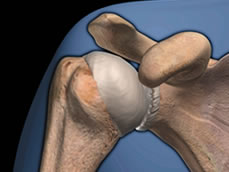
Shoulder Replacement
Replacement of an arthritic or injured shoulder is less common than knee or hip replacement. When necessary, however, shoulder replacement typically provides the same benefits as those procedures, including relief of joint pain and restoration of more normal joint movement.
Cartilage
A smooth substance called articular cartilage covers the surface of the bones where they touch each other within a joint. This articular cartilage acts as a cushion between the bones.
The Rotator Cuff
The rotator cuff — 4 muscles connecting the humerus with the scapula — supplies stability and balance to the shoulder joint. Proper rotator cuff balance is essential for arm raising and rotation. When you raise your arm, the rotator cuff holds the humeral head tightly within the socket (glenoid) of the scapula.
Causes of Shoulder Pain
• Tendonitis/bursitis
• Injury/instability
• Arthritis
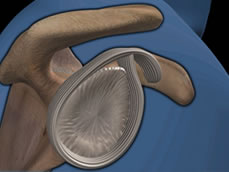
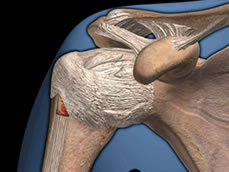
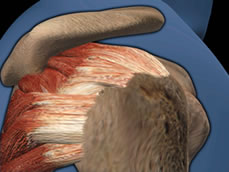
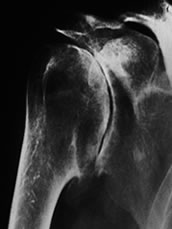
Diagnosing Shoulder Pain
• Medical History
• Physical Examination
• X-rays
• Additional Tests
Diagnosis
Medical History
• How and when did the pain start?
• If the pain has occurred before, how was it treated?
• What activities aggravate the pain?
• What activities relieve the pain?
Physical Examination
• Tenderness to the touch
• Weakness in the muscles
• Extent of passive and active range of motion
X-ray Evaluation – Osteoarthritis of the Shoulder
X-rays of an arthritic shoulder show a narrowing of the joint space, changes in the bone and the formation of bone spurs (osteophytes).
Additional Tests
• Blood tests
• Urine analysis
• Computerized Tomography (CT) scans
• Magnetic Resonance Imaging (MRI) scans
• Arthroscopy
Treating Shoulder Pain
• Rest
• Physical therapy
• Pain medications
• Anti-inflammatory medications
• Surgery
Shoulder Replacement
The Procedure
There are two types of shoulder replacement procedures:
• A partial shoulder joint replacement is used when the glenoid socket is intact and does not need to be replaced.
• A total shoulder joint replacement is used when the glenoid socket needs to be replaced.
The artificial shoulder joint can have either two or three moving parts, depending on the type of surgery required.
• The humeral component (metal) is implanted in the humerus
• The humeral head component (metal) replaces the humeral head at the top of the humerus
• The glenoid component (plastic) replaces the surface of the glenoid socket
The Results
• Study of 24 patients who had undergone total shoulder replacement*
• Before surgery, 100% of patients had disabling pain
• After surgery, 92% of patients had no pain
*Friedman RJ et al., JBJS. 1989;71:494-498.
After Shoulder Surgery
Recovery and Rehabilitation
The vast majority of individuals who have joint replacement surgery experience a dramatic reduction in joint pain and a significant improvement in their ability to participate in the activities of daily living. Keep in mind, however, that joint replacement surgery will not allow you to do more than you could before joint problems developed.
After joint replacement, a good rule of thumb is that acceptable physical activities should:
• Not cause pain, including pain felt later.
• Not jar the joint, as happens with running, jumping, or hiking.
• Not place the joint in the extremes of its range of motion.
If you are considering doing any of the following activities, which could affect how long your artificial shoulder will last and how well it will perform, discuss it first with your doctor or orthopaedic surgeon:
• Any activity involving lifting or pushing heavy objects
• Any activity that places excessive stress on your shoulder joint
• Hammering and other forceful arm/shoulder movements
• Boxing and other arm/shoulder impact sports
